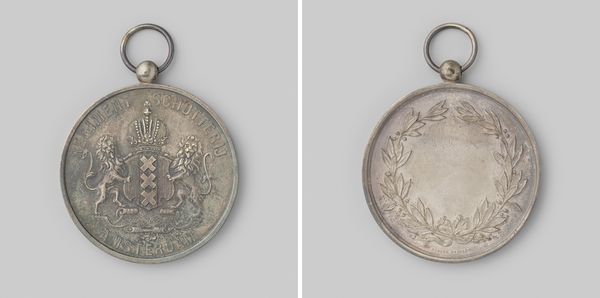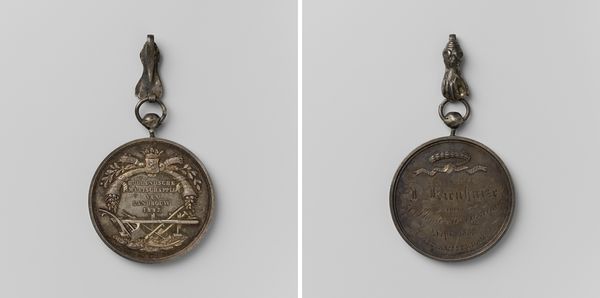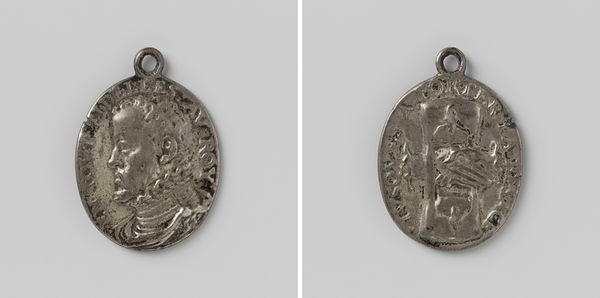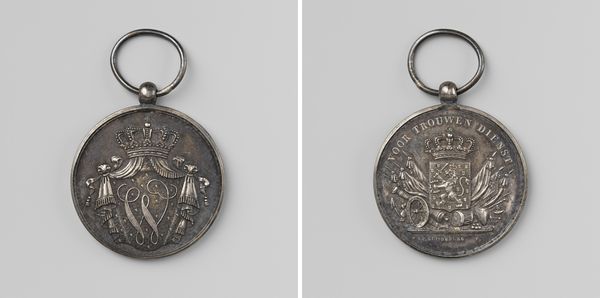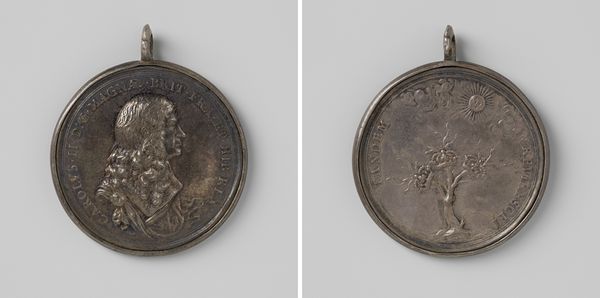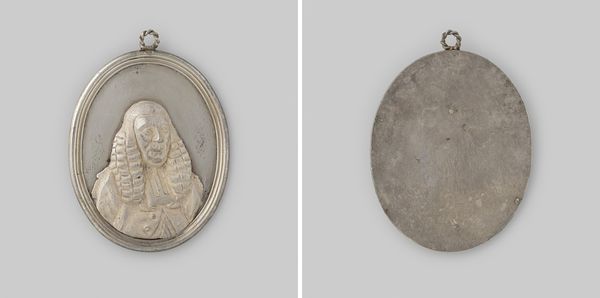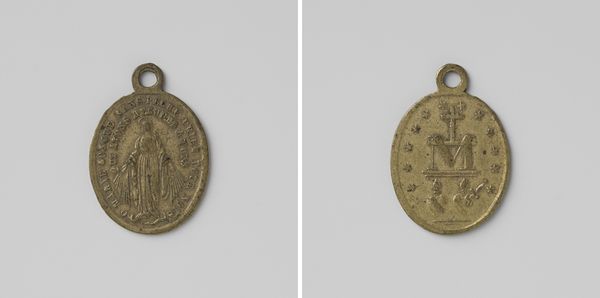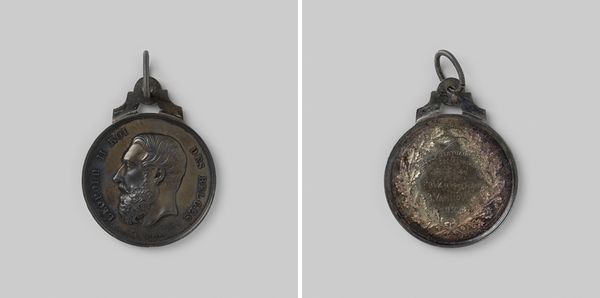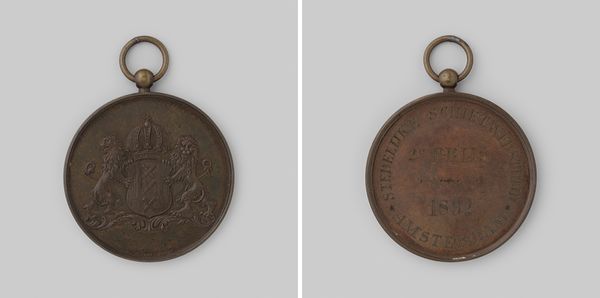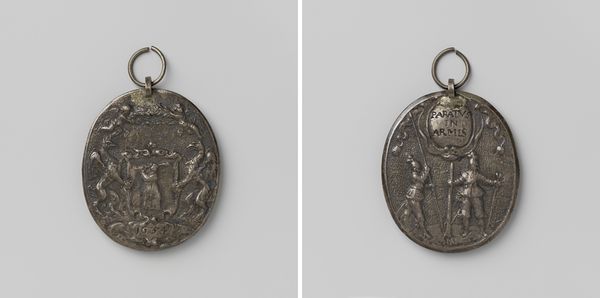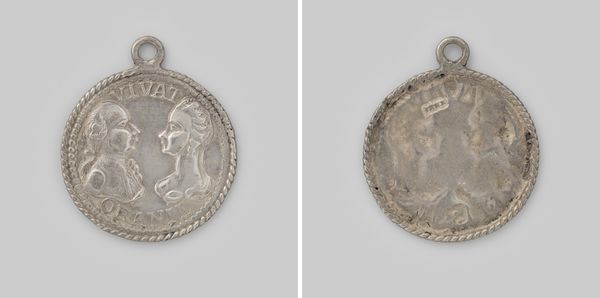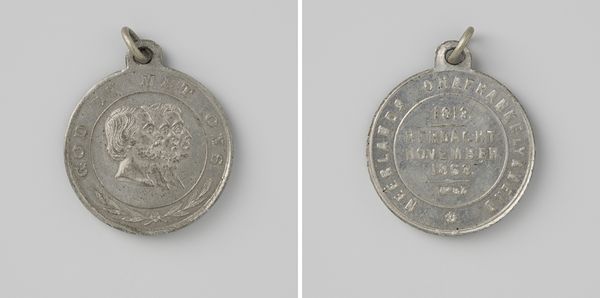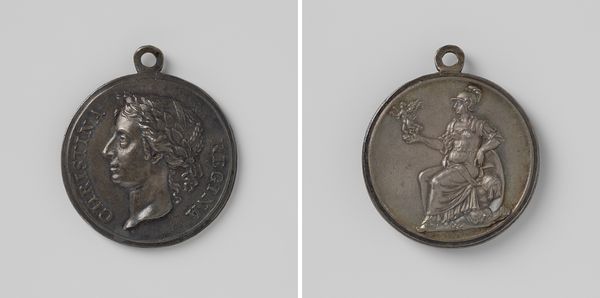
metal, relief, sculpture
#
portrait
#
dutch-golden-age
#
metal
#
relief
#
sculpture
Dimensions: diameter 4 cm, weight 3 gr, diameter 5.1 cm
Copyright: Rijks Museum: Open Domain
Curator: This is the Burgemeesterspenning Gemeente Amsterdam, or the Mayor's Medal of the Municipality of Amsterdam, crafted in 1852. David van der Kellen is credited with this work now held in the Rijksmuseum. Editor: My initial impression is one of subdued power. Despite its size, likely intended to be worn, it carries significant weight. The cool tones of the metal add to this serious, official mood. Curator: Indeed. These medals served as important symbols of authority and civic identity. Consider how institutions use such symbolic objects to bolster their position in society. What is subtly being communicated by wearing or gifting this kind of object? Editor: I think there are two narratives embedded here. On one side, the use of lions as a symbol connects Amsterdam to the image of a strong monarchy. But what does it signal by centering the municipal heraldry so distinctly with the three crosses? And how did the distribution or bestowal of the medal potentially reinforce class distinctions and political patronage in 19th century Amsterdam? Curator: Good points. We also have to analyze how this "portrait" flattens the representation of power itself. It seems intended to convey stability, continuity, but what specific communities would have understood its specific meaning? And wouldn’t such an image reinforce existing structures of power for those excluded from them? Editor: I think understanding its circulation matters—who wore it and on what occasions? If, say, such medals were largely inaccessible, it underlines its role in maintaining status for a select group and perpetuating hierarchical dynamics. Curator: Reflecting on this piece now, it emphasizes to me that official art is seldom neutral; it functions as a cultural artefact with real effects on its public, a crucial element in the historical function of Dutch society. Editor: And it is worth reflecting that something seemingly benign and bureaucratic can also communicate narratives of inclusion and exclusion just through the act of its official display or the honor of its being bestowed.
Comments
No comments
Be the first to comment and join the conversation on the ultimate creative platform.
